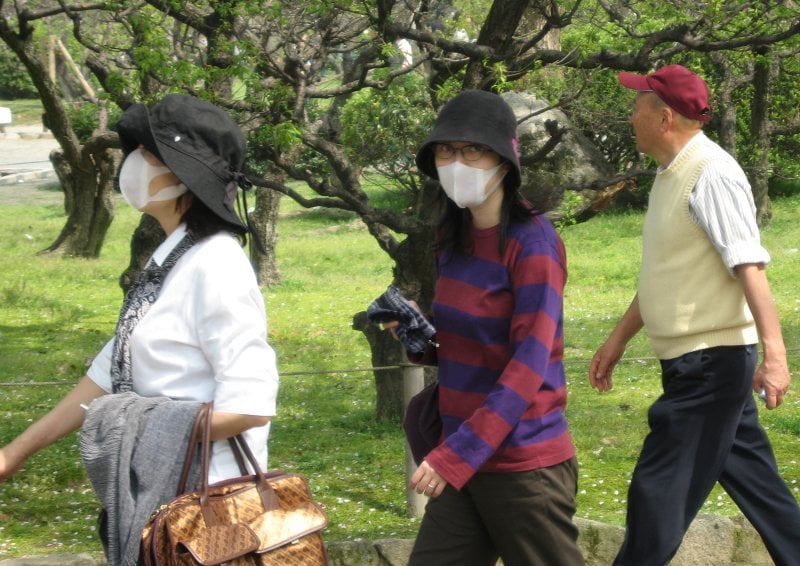The flu strikes every winter. But this influenza season is particularly dangerous. Outbreaks of “avian influenza” or “bird flu” have been reported in 40 countries since November. This sharply increases the likelihood that deadly bird flu stains may begin infecting humans in larger and larger number.
Now, the World Health Organization is on “high alert.” And for good reason.
Influenza is a threat every year, but this flu season is different.
40 countries is an unusually large number of outbreaks, in a wide geographical range of locations. The number of cases has increased steeply since December. Some of these outbreaks result from a new strain of influenza; Asia is facing severe outbreaks of the H5N6 influenza virus in animals, which was actually created by four existing viruses swapping genes.
Even more ominously, there are signs that this outbreak could be the beginning of the worst possible scenario for pandemic flu: human-to-human transmission of avian influenza. Currently, most flu epidemics are limited by a convenient combination of factors. The most deadly type of influenza is avian influenza type H7N9. About one in three infected people die of it. Avian influenza, however, is transmitted among birds and from birds to humans. It does not transmit from human to human. The types of influenza that are transmitted from human to human are less deadly.
However, flu viruses evolve quickly. Epidemiologists have known that sooner or later, an influenza virus will combine the deadliness of avian influenza with the human-to-human transmission of lesser serious flu viruses. When that times comes, we’ll be looking at a massive, deadly pandemic, launched by birds and continued among humans. Wild birds bring influenza viruses to domestic bird populations. Influenza spreads rapidly in the tight conditions of commercial poultry farming.
Right now, there are two reported clusters of avian influenza in China that may actually have transmitted human to human. The WHO hasn’t ruled it out. There have been 111 cases of H7N9 – in humans – in China since January 3rd; that’s more than all of December. This looks like an outbreak that is just getting started.
The Asian outbreaks of H5N6 avian influenza have so far been mostly limited to animals, but they are huge animal outbreaks.
South Korea is now at the highest level of alert for avian influenza. It’s the first time South Korea has gone to that alert level. H5N6 has been found in wild birds, domestic poultry, and cats. Twelve percent of poultry has been culled. China’s Xinjiang province has culled 55,000 chickens as a result of H5N6 infection, and Hong Kong has reported finding H5N6 in wild bird droppings. There have also been two cases of H5N6 infection in humans in China.
A third strain of avian influenza, H5N8 is also spreading. Outbreaks of H5N8 have been reported in Europe and the Middle East. H5N8 has been found in wild birds in Italy, Serbia, Slovenia, and Spain. Poultry farms are now under enhanced biosurveillance after H5N8 was identified in an Italian turkey farm. Kuwait has reported the first cases of H5N8 ever identified in the country, found in backyard birds including geese and pheasants. H5N8 has also been reported in Egypt, Iran, and Israel in the last few months.
It is not just avian influenza that is particularly bad this flu season. The number of influenza cases among humans to date in Europe and East Asia is higher than average. Most cases are influenza type A H3N2, which is a variant of swine flu that also spreads human to human.
Influenza outbreaks, across the board, are especially severe this season. One strain of avian influenza, H7N9, is breaking out all over China in humans. Another strain, H5N6, is in birds all over East Asia. H5N8 is in Europe and the Middle East. All of them are showing up in higher numbers than usual. What does all this mean? The WHO warning doesn’t provide much insight. Director-General Chan didn’t ask for specific actions, simply that countries adhere closely to the international health regulations and maintain effective reporting and tracking of influenza.
There is no clear conclusion to be drawn from this year’s flu season, but one can conjecture. We know that influenza viruses can share genes with each other, to transfer immunity to certain anti-flu drugs, and to create new virus subtypes. We also know that there are more cases of influenza, of many different kinds, appearing during this flu season.
The concern, in my opinion, is this: a new influenza virus subtype, with the human-to-human contagion of a swine flu and the ferocious fatality rates of avian influenza. If such a subtype were to appear, these are the kinds of conditions that would breed it. If it does appear, early warning will be our only real chance to stop a pandemic.
Pandemic influenza would be catastrophic. The 1918 flu pandemic killed between 20 and 40 million people, at a time when international commercial air travel did not even exist. Pandemic flu would spread much faster now. Yet, as Director-General Chan pointed out in her statement, we are “not at all well enough” prepared.
The WHO’s International Health Regulations — which include a set of guidelines on how governments should respond to a public health emergency — are always important. They are our best bet for containing public health threat in a time of unprecedented globalization; they cover surveillance and response to disease outbreaks. Right now, however, they are not just important but vital. Carefully tracking influenza won’t guarantee that we can stop a pandemic, but failing to track guarantees we won’t succeed.
